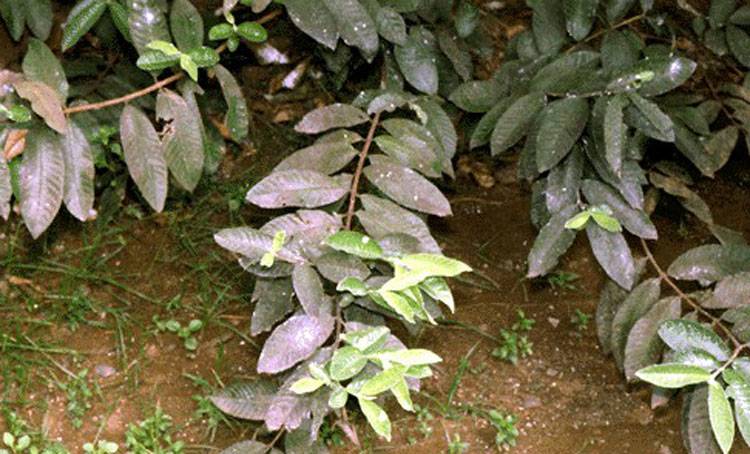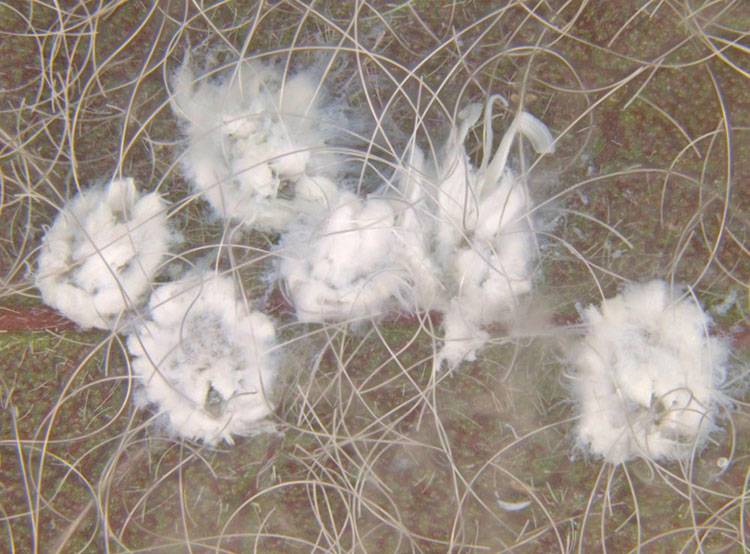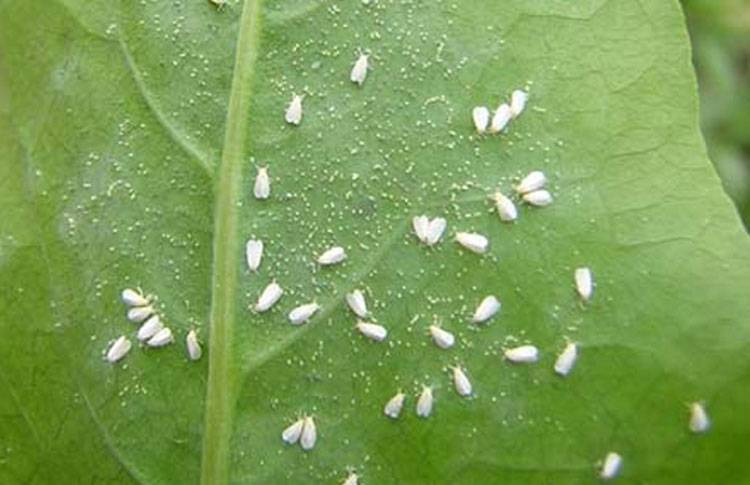Guava
White Fly

White Fly
Aleurodicus dispersus

White Fly
Aleurodicus dispersus

White Fly
Aleurodicus dispersus

White Fly
Aleurodicus dispersus
The Spiralling Whitefly (Aleurodicus dispersus): A Rising Threat to Tropical Crops
The spiralling whitefly, Aleurodicus dispersus, is an invasive and highly polyphagous pest, known for its rapid reproduction, distinctive spiral egg-laying pattern, and the heavy honeydew and waxy deposits it leaves behind. Native to Central America, it has spread extensively across Asia and Africa, where it causes serious damage to horticultural crops, ornamentals, and shade trees. In India, it has become particularly notorious on crops like guava, cassava (Manihot esculenta), coconut (Cocos nucifera), brinjal (Solanum melongena), and many more.
Egg Laying and Development
Adult females of A. dispersus lay elliptical, yellow to tan-colored eggs (0.3 mm long, 0.1 mm wide) with a short pedicel inserted into the host plant tissue during oviposition. These eggs are laid in loose spirals along with waxy secretions—hence the name “spiralling whitefly.” Egg spirals may be regular or irregular depending on the plant species and infestation stage. For instance, regular spirals were common on coconut (93.3%) and brinjal (38.7%) in early stages, while irregular spirals became more dominant later (Boopathi, 2013).
At 25°C, the life cycle completes in about 26–40 days, varying by host. Eggs hatch in 7–10 days, followed by four nymphal stages. Pupation lasts about 5–16 days, and adult longevity ranges from 11 to 17.6 days depending on host and temperature. Females begin laying eggs a few days after emergence and may produce over 60 eggs, with fecundity highest at 25–30°C. A. dispersus thrives at 25°C, showing the highest survival, development, and hatchability (Boopathi, 2013; Wen et al., 1994b, 1996).
Temperature and Humidity Preferences
The spiralling whitefly is active between 12.3°C and 32.3°C, with optimal population growth and fecundity occurring at around 25°C. It can survive throughout the year in tropical climates, particularly thriving during post-monsoon months. Relative humidity influences its development to a lesser extent, but high moisture levels can support dense populations (Wen et al., 1996; Boopathi, 2013).
Nature of Damage
Both nymphs and adults feed by sucking plant sap, causing:
-
Yellow speckling, leaf curling and crinkling, and premature leaf drop
-
Distorted leaves with symptoms resembling viral infections (mosaic, vein discoloration)
-
Reduced photosynthesis and yield
In cassava, infestation typically starts on lower leaves and progresses upwards, severely impacting leaf health (Palaniswami et al., 1995). Additionally, A. dispersus has been associated with over 25 plant diseases (Costa, 1969; Russell, 1965).
Indirect Damage
The insect secretes copious amounts of honeydew and wax, encouraging the growth of black sooty mold that coats leaves and fruits. This not only reduces photosynthetic efficiency but also makes fruits and ornamental plants unsightly and unmarketable (EPPO, 2006).
Reproductive Potential
This pest reproduces rapidly. In one experiment, just 20 pairs produced over 1,500 individuals in 37 days (Waterhouse & Norris, 1989). Mated females produce both male and female offspring, while unmated females produce only males. Adults are generally more active in the mornings but mate during the afternoon.
Conclusion
A. dispersus represents a growing challenge for tropical agriculture due to its adaptability, rapid life cycle, and destructive feeding behavior. Effective management requires close monitoring, especially in warm and humid regions, and may involve integrated pest control strategies including biological agents, sanitation, and temperature-based forecasting.
